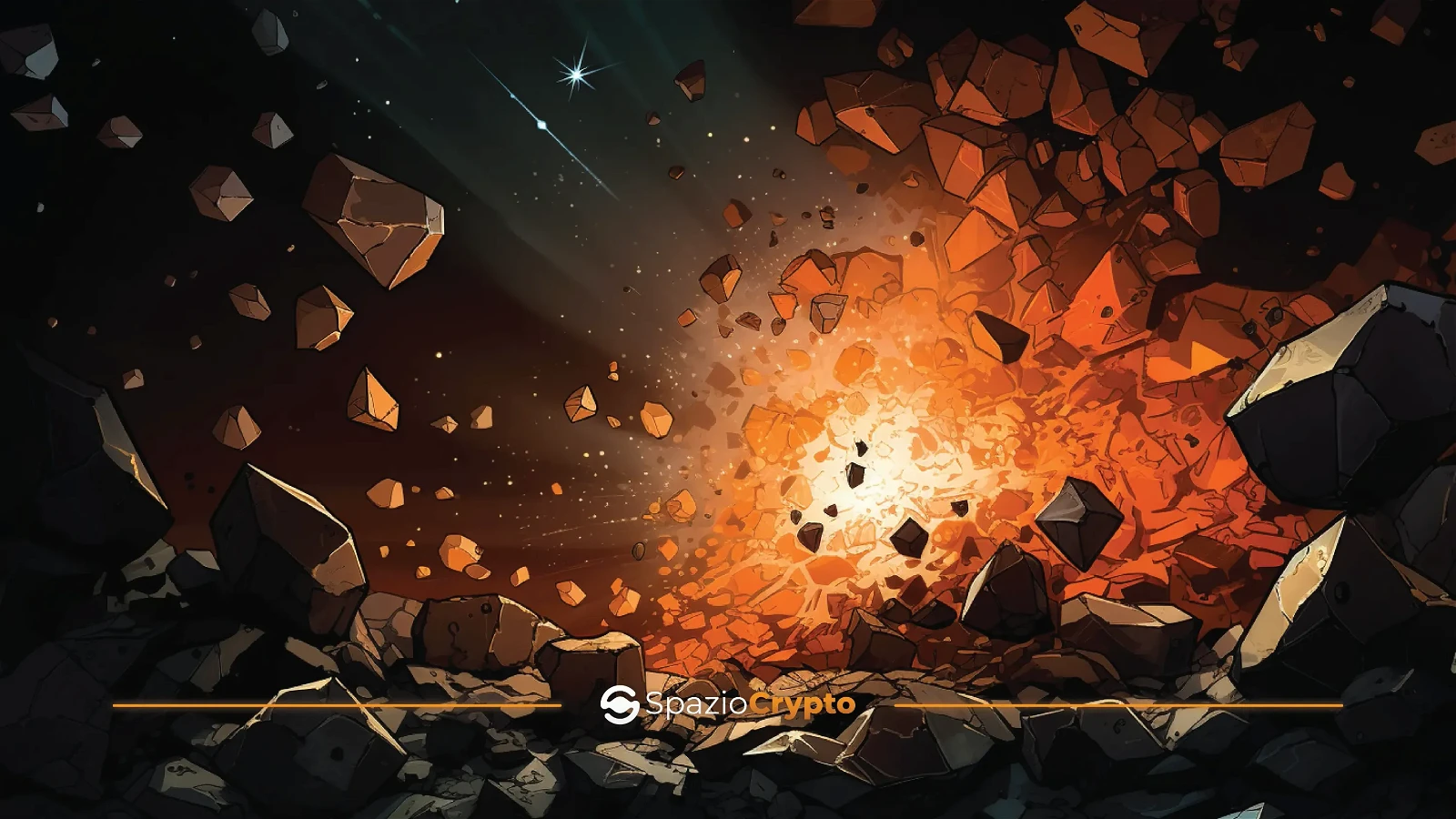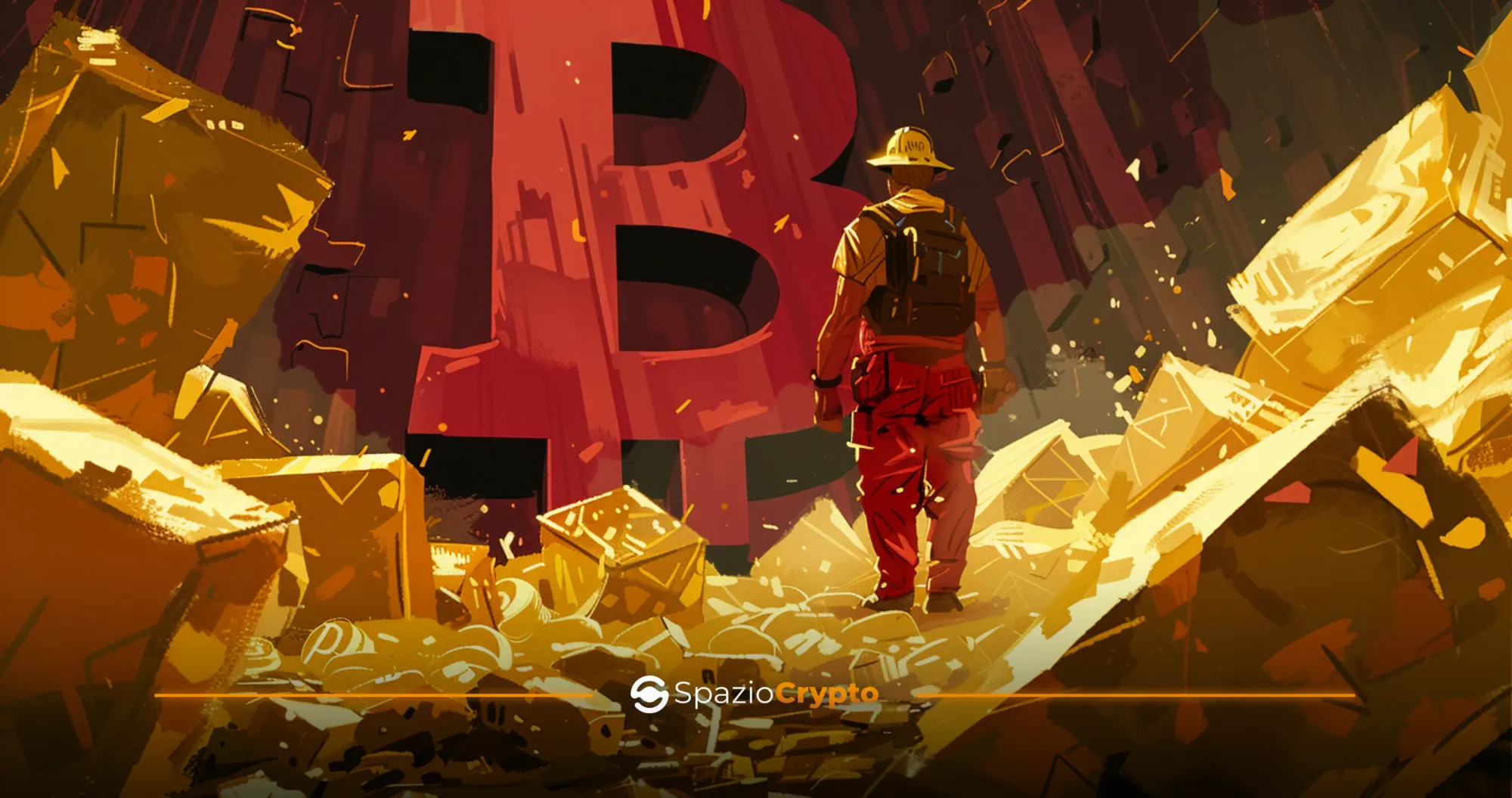The advent of blockchain technology has revolutionised the financial and technological landscape, providing a secure and transparent means of recording transactions. However, with increasing adoption and increasing complexity of transactions, a crucial hurdle has become apparent: scalability. In this race towards optimisation, the concept of 'sharding' has emerged as a promising solution to overcome the limitations of scale in blockchain.
In this in-depth exploration of our Web3 Guide, we will dive into the world of sharding, analysing its fundamentals, impacts and practical implementations. From how it works to which projects make use of it, we will explore the revolutionary potential of sharding in building a more efficient and scalable blockchain ecosystem.
Fundamentals of Sharding
In the vast blockchain universe, where every transaction is recorded on a series of distributed nodes, the concept of sharding stands out as an ingenious solution to address the challenge of scalability, a key element in the scalability trilemma. To fully understand its impact, it is crucial to explore its fundamentals.
Concept of Sharding
Sharding is based on a simple but revolutionary principle: dividing the blockchain network into smaller, more manageable 'shards'. Each shard acts as an independent section of the network, responsible only for transactions related to a specific subset of users or smart contracts. This fragmentation allows the workload to be distributed equally among the network nodes, significantly reducing processing times.
How Sharding Works in the Blockchain
When a user submits a transaction, it is assigned to a specific shard, rather than being processed by the entire network. This process reduces congestion and speeds up the confirmation of transactions. Coordination between the shards is ensured by an intelligent mechanism, often known as a 'coordinator' or 'sharding manager', which synchronises information between the different shards of the blockchain.
The effectiveness of sharding is anchored in its ability to parallelise operations, allowing multiple shards to work simultaneously. This results in a significant increase in performance and the efficient management of the growing amount of data, ensuring that the blockchain can grow without compromising the integrity and security of the system.
Benefits of Sharding
Now that we have outlined the fundamentals of sharding, it is crucial to explore in depth the benefits this technology brings to the world of blockchain. Sharding is not only a solution to the scalability challenge, but a catalyst for a more efficient and dynamic blockchain ecosystem.
Scalability
The first and perhaps most obvious benefit of sharding is scalability. By breaking the blockchain network into smaller shards, each of which can operate independently, the need to process each transaction across the entire network is eliminated. This allows the blockchain to grow linearly, easily handling an increasing number of transactions without compromising performance.
Performance Improvement
Performance improvement is a direct corollary of scalability. By reducing the workload on each blockchain node and enabling parallel operations on different shards, sharding optimises processing time. Transactions are confirmed more quickly, providing a smoother user experience and significantly reducing waiting times.
Reducing Transaction Costs
By reducing congestion and processing times, sharding contributes to lower transaction costs. Competition between shards for transaction processing can lead to more competitive fees, further improving the accessibility and efficiency of the blockchain.
In the next chapter, we will explore the challenges inherent to sharding and the innovative solutions developed to address them, so that scalability does not compromise the security and decentralisation of the blockchain.
Challenges and Solutions in Sharding
Although sharding represents a promising solution for improving blockchain scalability, it is not immune to significant challenges. In this chapter, we will take a closer look at the main challenges associated with this technology and the innovative solutions developed to overcome them.
Security and Decentralisation
One of the main questions related to sharding is maintaining security and decentralisation. Network fragmentation could trigger vulnerabilities, and the need for coordination between shards could compromise the decentralised nature of the blockchain. Several implementations of consensus mechanisms and advanced cryptographic techniques have been developed to mitigate these risks.
Data Consistency Management
Managing data consistency between shards is another crucial challenge. Ensuring that all parts of the blockchain are synchronised and that no conflicts occur requires careful design. Approaches such as "proof of stake" (PoS) and consensus protocols specific to sharding have been introduced to manage this complexity.
Conflict Resolution
In fragmented environments, conflicts can arise during the recording of simultaneous transactions in different shards. Conflict resolution and parallel transaction management mechanisms are essential to maintain the integrity of the blockchain. We will explore how these challenges are addressed through advanced protocols and intelligent algorithms.
In the next chapter, we will explore practical implementations of sharding, analysing blockchain projects currently adopting this technology and case studies highlighting both successes and challenges encountered in the field.
Practical Implementations of Sharding
Practical implementations of sharding have gained momentum thanks to various crypto projects that are leveraging this technology to improve the scalability and efficiency of their blockchains. In this chapter, we will explore some of the most significant implementations, with a focus on Ethereum 2.0 and MultiversX.
Ethereum 2.0: Sharding for Scalability
Ethereum 2.0 represents one of the most long-awaited and significant implementations of sharding in the blockchain landscape. Ethereum, one of the first blockchains to succeed, faced problems with congestion and high transaction costs. With Ethereum 2.0, the protocol introduces sharding as a means to address these problems.
In Ethereum 2.0, the blockchain will be divided into independent 'shards', each of which will have its own blockchain, state and transactions. This allows for greater parallelisation of operations and, consequently, an increase in the overall capacity of the network. Ethereum 2.0 is implemented gradually, with each phase bringing new features and enhancements, including shards.
MultiversX: Sharding and Interoperability
MultiversX is a crypto project that leverages sharding to improve its scalability. Conceived as a complete blockchain ecosystem, MultiversX uses sharding technology to divide its main blockchain into more manageable fragments.
The two most notable features that distinguish MultiversX are Adaptive State Sharding and the Secure Proof of Stake consensus mechanism.
MultiversX represents a complete redesign of the blockchain architecture with the goal of achieving global scalability and near-instantaneous transaction speed. MultiversX's architecture is based on two key innovations:
Adaptive State Sharding across all layers: transaction, data and network. The dynamically adaptive sharding mechanism will merge and split shards taking into account both the number of available validator nodes and the network utilisation.
Secure Proof of Stake Consensus: Completed in only two communication steps, using multiple modified BLS (Boneh-Lynn-Shacham) signatures between validators in the consensus group. In addition, nodes within the shard are randomly selected for the consensus group without the ability to know the composition of the group beyond one round in advance.
Other Relevant Implementations
In addition to Ethereum 2.0 and MultiversX, several other blockchains are experimenting with or actively implementing sharding to address scalability challenges. Projects such as Zilliqa and Harmony have adopted sharding to improve the performance of their networks and enable greater user adoption.
Zilliqa is known to be one of the first projects to implement sharding effectively, enabling significant scalability without compromising security. Harmony focuses on scalability and transaction speed through the implementation of highly optimised sharding.
The Future of Sharding in the Blockchain
The concept of sharding, in terms of blockchain, has proven to be a significant breakthrough in solving scalability challenges. Over the years, sharding protocols have evolved, paving the way for a new era of more efficient and scalable blockchains. In this chapter, we will explore the future of sharding and how this technology will further revolutionise the blockchain landscape.
The Evolution of Sharding Algorithms
One of the most exciting aspects of the future of sharding is the evolution of the underlying algorithms. While early sharding implementations mainly focused on dividing the blockchain into smaller shards, the next generations of algorithms will focus on more efficient resource allocation and intelligent data management.
Developers are working to implement sharding algorithms that not only improve transaction speed, but also optimise the management of network resources and participating nodes. This will result in more efficient utilisation of computing capacity, thus contributing to greater blockchain sustainability.
Interoperability Between Blockchain Shards
A crucial aspect of the future of sharding is interoperability between different shards. Currently, many sharding implementations focus on independent shards, but the future will see the emergence of solutions that will allow for smoother communication between these distinct parts of the blockchain.
This will allow, for example, a decentralised application (DApp) to operate on multiple shards simultaneously, taking advantage of the specific expertise of each. Interoperability between shards will help to create a more cohesive and flexible blockchain ecosystem.
Sharding and Security
One of the main concerns about sharding has been security, as the division of the blockchain could theoretically make the system as a whole more vulnerable. In the future of sharding, new cryptographic techniques and advanced security protocols are expected to be implemented to mitigate these risks.
Developers are working to ensure that security remains a priority, even when sharding is adopted. This could include the use of advanced cryptographic signatures, improved consensus algorithms, and solutions to prevent attacks that exploit the divisions between shards.
Scalability on a Large Scale
Sharding was originally designed to address the problem of scalability in blockchains, and the future will see this technology spread to a large scale. Blockchains with millions, if not billions, of users will be able to operate without compromising transaction speed or security.
The large-scale implementation of sharding could lead to the creation of global blockchain networks capable of handling a wide range of applications, from decentralised finance (DeFi) to supply chain tracking, without sacrificing performance.
Impact on mass adoption
The future of sharding is not limited to the technology itself, but also extends to mass adoption. As blockchain becomes more scalable, fast and efficient, more and more industries are expected to adopt the technology to improve their infrastructure.
Mass adoption of sharding could be the catalyst that pushes blockchain into everyday use, with people interacting with blockchain technologies without even realising it, thanks to a smoother user experience and virtually instantaneous transactions.
The future of sharding in blockchain looks promising, with developments beyond simple blockchain partitioning. Algorithm evolution, interoperability, improved security, large-scale scalability and mass adoption are all elements that will help shape the next phase of blockchain evolution. With these innovations, at Spaziocrypto, we are convinced that sharding could be the key to unlocking the full potential of decentralised technologies, paving the way for new usage scenarios and a radical transformation of many sectors.








